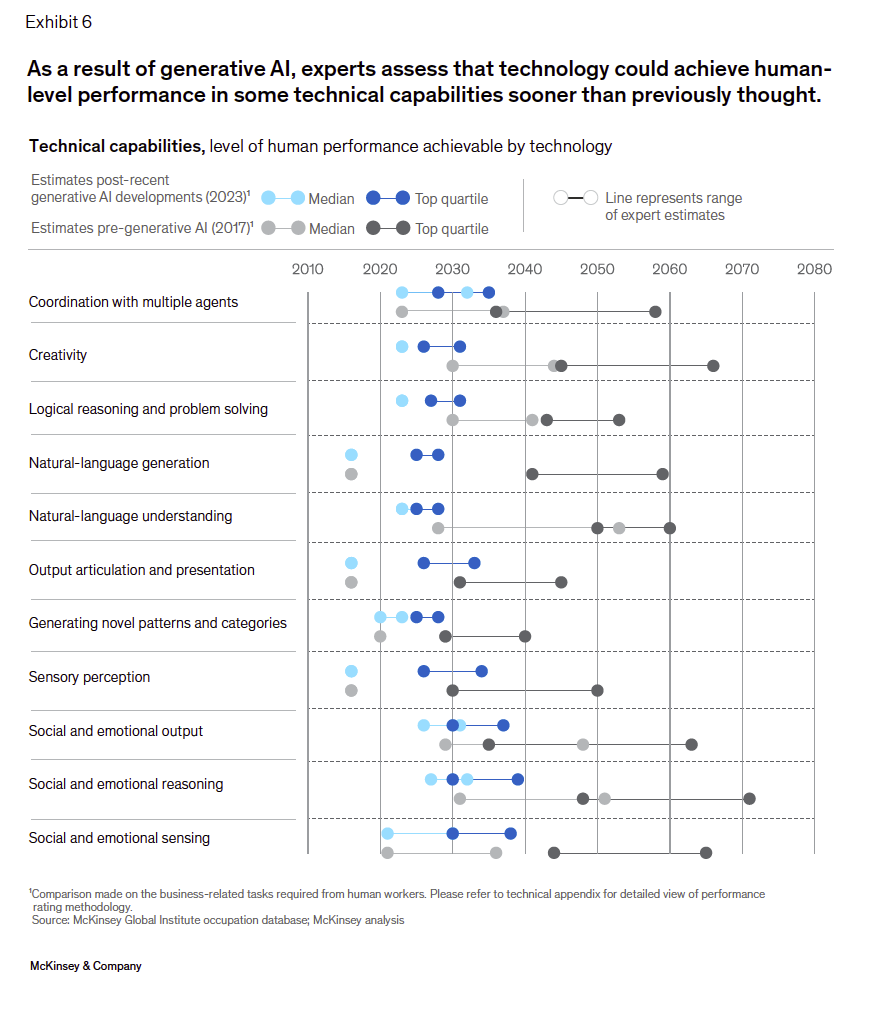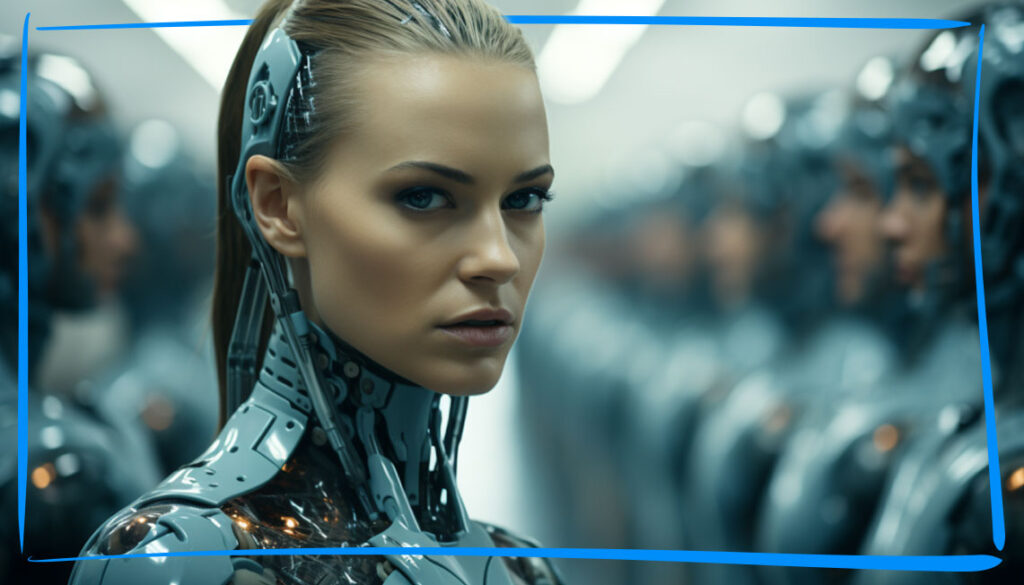The accelerated development of generative AI has been greatly facilitated by advancements in computing power, data availability, and machine learning algorithms. A pivotal study conducted by McKinsey in 2017 predicted a much slower rate of progression for this technology.
At the time, the complexity of human-like text generation and the nuanced understanding of language seemed decades away. However, the reality has far outpaced these early predictions. AI is now able to generate text that is increasingly indistinguishable from human-authored content.

Platforms like ChatGPT by OpenAI and Midjourney have been game-changers. They’ve shifted how we perceive generative AI’s abilities. As designers, we’re familiar with seeing, feeling, and experiencing things tangibly. These platforms offered just that – a tangible demonstration of AI progress. We’re now at a point where AI isn’t just an abstract idea but a concrete reality.
Witnessing these AI capabilities firsthand, the public could understand the potential implications of this technology, taking the concept from an abstract idea to a concrete reality.
The upside to all of this is that McKinsey is predicting that generative AI could add $4.4 trillion in value to the global economy each year.
Now, the task at hand for society is to grapple with the implications of such technology. The transformative power of generative AI is evident, but its potential for disruption is also clear. Job displacement, particularly in sectors like software development and content creation, is a pressing concern that needs to be addressed immediately. As we move into this new reality, re-skilling, and up-skilling of the workforce must be given priority to help individuals adapt to the changes brought about by AI.
Moreover, the rise of generative AI necessitates robust discussions on data privacy and security. With AI’s ability to generate content based on input data, questions around consent, ownership, and misuse of data come to the fore. These discussions are critical to ensure the ethical use of AI and to build systems that can prevent potential misuse. As designers, we’ve always cared about user experience, and now, more than ever, we must ensure that AI is used ethically.
What this means for you
Now, here’s the challenge: how do we, as creative professionals, adapt to this technological landscape? AI can be transformative, but it could also disrupt our industry. Job displacement is a real concern, especially in creative sectors. As we navigate this new reality, we must prioritize acquiring new skills and redefining our roles to adapt to AI-induced changes.
Let’s not forget, though, every technological advance brings new opportunities. Job displacement might be a reality, but so is the creation of new roles requiring unique skills. As designers, we’ve always been at the forefront of change, using our creativity to solve problems. Now, the rapid rise of generative AI challenges us to reimagine our roles and prepare for a future that’s different yet full of potential. So, let’s embrace it, let’s learn, adapt, and use this opportunity to reshape the future of design.



